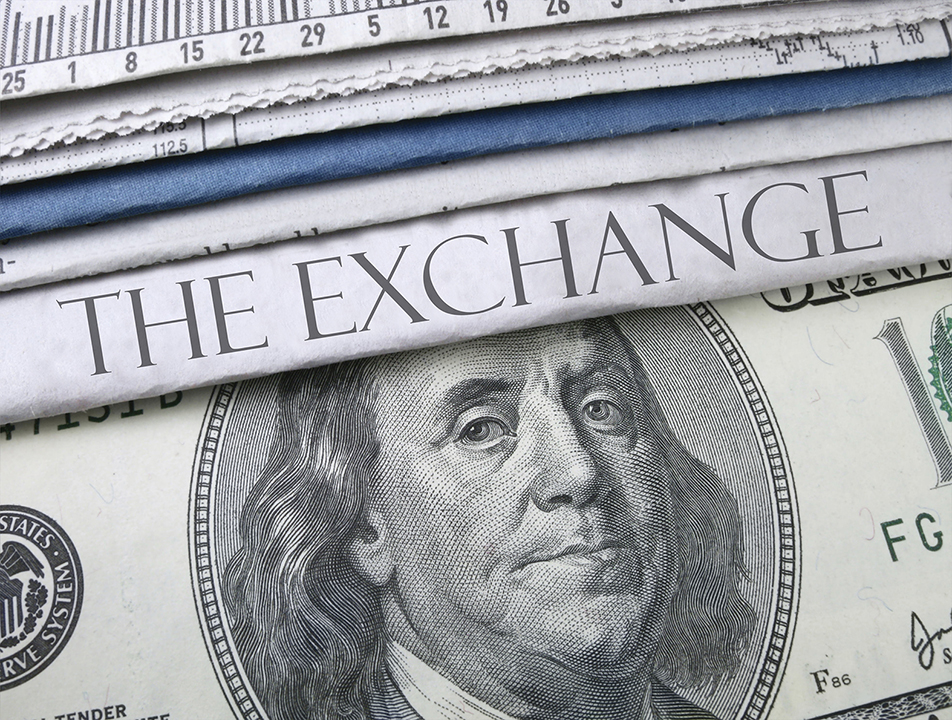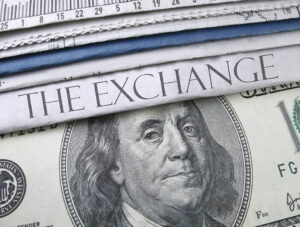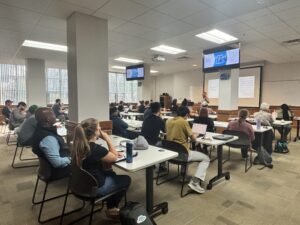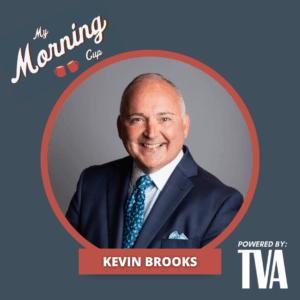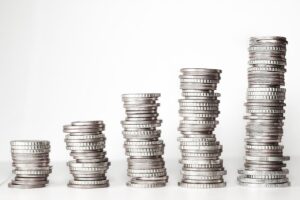The views expressed in this article represent the opinions of the author and do not necessarily reflect the opinions of the Chattanooga Area Chamber of Commerce, its staff, or its board of directors.
As a Professor of Economics at the University of Tennessee at Chattanooga, I teach my students that economics is a value-free discipline. We rely on positive analysis—what is, not what ought to be—grounded in logic, not emotion. As I often tell them, “There’s no crying in econ!” channeling my best Tom Hanks impression. But I’ll confess: the trade war unfolding in 2025 is making me tear up. With the stroke of a pen, tariffs are unraveling decades of economic progress built on free trade, mocking the lessons we impart to our students about voluntary exchange.
Tariffs Through Time: A History of Failure
Tariffs aren’t new, and their failures are etched in history. In the 18th century, Adam Smith, the father of economics, fought Britain’s Corn Laws, which taxed imported grain to protect farmers. In The Wealth of Nations (1776), he showed how these tariffs raised food prices, hurt consumers, and stifled trade, benefiting a few at the expense of many. His advocacy helped repeal the Corn Laws, spurring Britain’s economic ascent through freer trade.
The Smoot-Hawley Tariff Act of 1930 offers a darker lesson. Raising tariffs on 20,000 goods to 59%, it aimed to shield U.S. industries during the Great Depression. Instead, Canada and Europe retaliated, global trade collapsed by two-thirds, and unemployment hit 25%. The U.S. economy shrank 30%, demonstrating how tariffs can turn downturns into disasters.
Today’s 2025 tariffs, as of August 12, risk a devastating economic spiral akin to past trade wars.
President Trump’s second-term trade policies have escalated rapidly. Executive Order 14257, announced April 2 as “Liberation Day,” imposes a 10% baseline tariff on all imports, with 57 countries facing higher rates based on trade deficits: 35% on Canada (effective August 1) 25% on Mexico, and 10% on China (down from 145% after a May and August pause, but set to rise again by November 10). Steel and aluminum tariffs doubled to 50% in June, and a 25% auto tariff targets Mexico and the EU. A May court ruling deemed IEEPA-based tariffs illegal, but they persist pending appeal. The Tax Foundation estimates the average applied tariff rate at 19.9%, the highest since 1943, and up from an effective rate of 2.4% in early January 2025.
For Chattanooga, a manufacturing and logistics hub, these tariffs are a gut punch. The Port of Savannah, a lifeline for local importers, reports a 50% drop in freight bookings since April. Retailers in Hamilton Place face price hikes on apparel and electronics, while Volkswagen’s Chattanooga plant, employing over 4,000, grapples with a $3,000 per-vehicle cost increase from tariffs on Mexican and EU parts.
Econ 101: The Case for Free Trade
Every principles of economics textbook—whether Mankiw, McConnell, or Krugman—dedicates a chapter to free trade, a bedrock of economic theory. Free trade harnesses comparative advantage, allowing countries to specialize in what they do best, boosting output and prosperity. By trading, nations create wealth, expanding total output—more goods, more services, more value—without needing to extract more from the earth or invent new processes. It’s the closest thing to a free lunch we’ll ever get in economics. The World Bank shows global GDP per capita has risen nearly 300% since 1960, largely due to trade liberalization, lifting over 1 billion people out of poverty.
Trade creates value by moving resources to their highest-valued use, a process economists call catallaxy—the spontaneous order of voluntary exchange that promotes mutual cooperation rather than rivalry over resources. When we shop, we trade, swapping dollars for goods. The same logic of voluntary exchange applies whether those goods come from Chattanooga, across the state line in Georgia, or across the country’s borders from Mexico, Canada or China. Scaled globally, this voluntary exchange means all parties benefit: consumers get more goods at lower prices, firms face competition that curbs market power, and countries, especially poorer ones, see higher growth.
Every semester, when I teach the benefits of free trade, my students are quick to ask: if trade is so great, why don’t we live in a free trade world? Why do we face restrictions like tariffs? My answer is simple: we don’t live in an economist’s dreamland. We live in the real world, where politicians often distort the positive-sum, win-win nature of trade into a zero-sum narrative for political gain. Protectionism, with tariffs often as its primary tool, is pitched as a way to save American jobs and industries, but this narrative is far from economic reality.
Tariffs = Taxes by Another Name
Tariffs function as taxes on imported goods, inflating the cost of foreign goods to favor domestic alternatives. Taxes, including tariffs, can raise government revenue, but they generate economic costs. All taxes alter consumer and producer behavior, creating economic distortions. When an activity is taxed, consumers and suppliers will tend to forgo the taxed activity and substitute other activities that are now relatively cheaper or more profitable to produce. These changes, while rational, are the source of market inefficiencies and often result in unintended effects. This reminds me of the effects of Philadelphia’s sugary drink tax, implemented in 2017 at 1.5 cents per ounce, where soda became relatively more expensive than beer, leading some consumers to purchase more beer and less soda.
In the case of tariffs, the switch from foreign to domestically produced goods is precisely the goal, shielding American producers from competition under the guise of saving American jobs. Politicians often sell tariffs as a way to make foreigners pay, framing it as “us vs. them.” But in economic reality, they don’t. Tariffs are a tax hike on American consumers.
When a tax is levied on one specific group (like foreign producers), this does not mean that they will bear the actual burden of the tax. In economics, this concept is known as tax shifting. A tax imposed on businesses, domestic or foreign, for example, can lead to higher prices for consumers. These higher prices will make consumers bear more of the burden of the tax, even though the tax is collected through businesses.
This isn’t free market economics at work—it’s government interference in markets, raising prices through policy, not corporate profiteering.
The True Costs of Tariffs
Tariffs raise prices, period. They increase the cost of imported goods, and retailers pass these costs to consumers. Studies from the Tax Foundation and the Budget Lab at Yale indicate that U.S. households bear 70-100% of tariff costs, with prices rising 1.8-3% in the short term—equivalent to a $1,296 to $4,900 annual increase per household.
We’ve seen this before. During Trump’s first term, a 20-50% tariff on washing machines—aimed at shielding producers like Whirlpool—caused washer prices to jump by $86 and dryer prices by $92, costing consumers $1.5 billion annually. While 1,800 jobs were added, each cost over $815,000 in consumer losses. Whirlpool raised prices to match imports, pocketing additional profits thanks to the tariffs.
Steel tariffs from 2018 tell a similar story. Intended to bolster U.S. steelmakers, they raised costs for industries like automotive and construction, which employ thousands in Chattanooga. The Economic Policy Institute estimated 75,000 job losses in steel-consuming sectors nationwide, dwarfing the 1,000 jobs saved in steel production. Local firms like Chattanooga’s Mueller Company, which manufactures water infrastructure components, faced higher input costs, squeezing margins and forcing price hikes. The Federal Reserve noted a 1.2% drop in manufacturing employment by 2019, with Chattanooga’s industrial base feeling the ripple effects.
Choices dwindle as imports become unaffordable. The 50% steel tariff, doubled from 25% in June, echoes 2018’s effects, raising costs for construction and manufacturing. For instance, the 25% auto tariff, effective April 3, is projected to increase car prices by $2,765-$4,711. Domestic producers, insulated from competition, face reduced incentives to innovate, raising prices and perpetuating inefficiencies.
The burden falls heaviest on everyday Americans. The Budget Lab estimates that 2025 tariffs have raised consumer prices by 2.3% overall, with apparel and shoes up 37-39% initially, settling at 17-18% higher long-term. Low-income households, spending more on tariffed essentials like food and clothing, face disproportionate impacts.
Tariffs shrink the economy, reducing wages, raising prices, and increasing unemployment. In 2025, the Penn Wharton Budget Model projects a 6% long-term GDP reduction and a 5% wage drop, with middle-income households facing a $22,000 lifetime loss. The jobs saved in protected industries are more than offset by losses in non-protected sectors, including export industries. The Tax Foundation projects 2025 tariffs will cost 142,000-770,000 jobs nationwide.
Economists United
You might be thinking that I am in the minority when it comes to free trade, that I’m a free trade zealot. Turns out economists are nearly unanimous: tariffs do more harm than good. A 2018 University of Chicago survey found 98% of economists agreed that tariffs reduce economic welfare. I joined nearly 2,000 other economists and scholars, including Nobel laureates, in signing the 2025 Anti-Tariff Declaration, which warns that tariffs risk a self-inflicted recession by raising prices and stifling growth.
From left-leaning institutions like the Peterson Institute to right-leaning ones like the Tax Foundation, and non-partisan groups like the National Bureau of Economic Research, the evidence is clear: tariffs raise prices, cut GDP, and destroy jobs. This isn’t a left-versus-right debate. It’s a matter of economic logic, grounded in data showing that protectionism costs more than it delivers, no matter your political stripe.
Economic Education: The Key to Prosperity
Tariffs thrive on a misunderstanding of economics, which is why economic education is fundamental. Economics shows that tariffs are a costly illusion. We analyze trade-offs, not emotions. Yet, the 2025 trade war feels personal, undoing the free trade principles I teach. Principles that have increased living standards worldwide, doubled global lifespans and drastically reduced extreme poverty.
Chattanooga’s history of innovation illustrates that openness, not isolation, drives prosperity.
Claudia Williamson Kramer is the Scott L. Probasco, Jr., Distinguished Chair of Free Enterprise, Professor of Economics, and Executive Director of the Center for Economic Education at UTC.
To hear more from Dr. Kramer, listen to her latest conversation on WUTC here: https://shorturl.at/CyWM0
